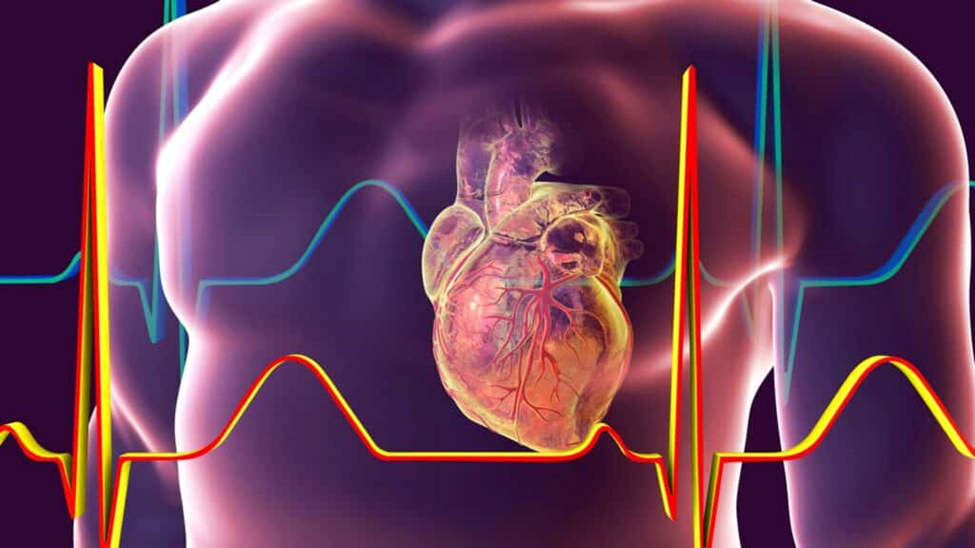Takotsubo syndrome (TS), which is also known as stress cardiomyopathy, is a medical condition that is characterized by transient dilated cardiomyopathy and is often triggered by emotional distress. TS is usually not associated with obstructive coronary artery disease (CAD); however, recent evidence suggests a connection between TS and neurological and psychiatric factors. This case report aims to explore a less common trigger for TS: the use of sumatriptan, which is a medication used to abort migraines. The report will provide an in-depth analysis of how sumatriptan can trigger TS and the potential risk factors associated with its use. This information will be helpful in the future management of TS patients who use sumatriptan as a migraine abortive medication.
Case Presentation 1
A 57-year-old woman, who had a prior history of migraines, visited the hospital complaining of left-sided chest pain that seemed to radiate to her back. Her initial electrocardiogram (ECG) showed anterior lateral T-wave inversion, and her troponin level was elevated. It was revealed that she had taken sumatriptan earlier that morning to treat the migraine.

Figure 1: Twelve lead electrocardiogram demonstrating lateral T-wave inversion in leads V4-V6

Figure 2: Coronary angiography (PA/CRA) demonstrating no significant coronary disease of the LAD and LCX

Figure 3: Coronary angiography (RAO/CAU) demonstrating no significant coronary disease of the LAD and LCX

Figure 4: Cardiac angiography (LAO/CAUD) demonstrating no significant coronary disease of the RCA

Figure 5: Transthoracic echocardiogram (apical four-chamber view) demonstrating depressed ejection fraction at 40% by Simpson’s method with apical hypokinesis at end-systole

Figure 6: Left ventriculogram demonstrating apical hypokinesis with basal hyperkinesis
Upon further evaluation through a coronary angiogram, no significant coronary disease was found. Still, imaging studies revealed a reduced ejection fraction, mid-to-apical akinesis, and basal hyperkinesis, classic signs of Takotsubo syndrome. The patient received appropriate treatment and was advised to discontinue sumatriptan as a measure for her migraines. She was discharged with a plan for a repeat outpatient echocardiogram. This case highlights the unique occurrence of Takotsubo syndrome triggered by sumatriptan use in a patient with a history of migraines.
Discussion 1
The diagnosis of TS can be challenging as it often presents with symptoms similar to ACS. Recent studies have suggested a potential link between TS and medications, especially the triptan class. The mechanism behind sumatriptan-induced TS may involve coronary vasospasm during acute migraines. This has led to the hypothesis that certain medications may trigger the onset of TS or exacerbate its symptoms. However, further research is required to confirm the association between TS and triptans and to gain a better understanding of the pathophysiology behind this correlation.
Conclusion 1,2
This case highlights the importance of conducting a comprehensive medication review when investigating Takotsubo syndrome cases. Although emotional stress is typically regarded as a primary factor contributing to the onset of TS, this report suggests a possible correlation between Takotsubo syndrome and certain medications, including sumatriptan. Gaining a better understanding of these associations can provide valuable insights into the pathophysiology and triggers of TS, potentially paving the way for further research and development of more effective treatments.
References
- Valentine MJ, Kramer HH, Kim J, et al. Heart Break or Headache: A Case Report of Sumatriptan-Induced Takotsubo Syndrome. Cureus. 2023 Sep 26. Doi: 10.7759/cureus.45990.
- Mohan J, Parekh A, DeYoung M. Sumatriptan Induced Takotsubo Cardiomyopathy; the Headache of the Heart: A Case Report. Front Cardiovasc Med. 2019 Sep 18;6:134. doi: 10.3389/fcvm.2019.00134.
About Docquity
If your educational and professional experience has not been sufficient to make your CV pop, expanding the network to other healthcare professionals to practice peer-to-peer learning might be the answer. One way to do it is by joining a social platform for healthcare professionals, such as Docquity.
Docquity is an AI-based state-of-the-art private & secure continual learning network of verified doctors, bringing you real-time knowledge from thousands of doctors worldwide. Today, Docquity has over 400,000 doctors spread across six countries in Asia. Meet experts and trusted peers across Asia where you can safely discuss clinical cases, get up-to-date insights from webinars and research journals, and earn CME/CPD credits through certified courses from Docquity Academy. All with the ease of a mobile app available on Android & iOS platforms!






